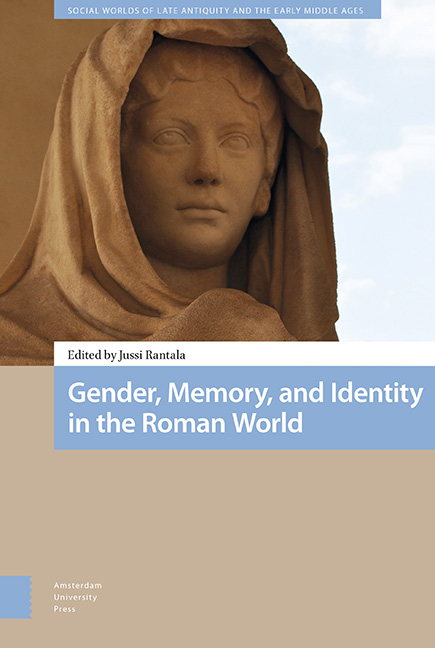Book contents
- Frontmatter
- Contents
- List of Illustrations
- Abbreviations
- Preface
- Tabula Gratulatoria
- Introduction
- 1 Public Agency of Women in the Later Roman World
- 2 Religious Agency and Civic Identity of Women in Ancient Ostia
- 3 The Invisible Women of Roman Agrarian Work and Economy
- 4 ‘Show them that You are Marcus’s Daughter’
- 5 Defining Manliness, Constructing Identities
- 6 ‘At the Age of Nineteen’ (RG 1)
- 7 Conflict and Community
- 8 Dress, Identity, Cultural Memory
- 9 The Goddess and the Town
- 10 Varius, multiplex, multiformis – Greek, Roman, Panhellenic
- 11 Mental Hospitals in Pre-Modern Society
- Index
6 - ‘At the Age of Nineteen’ (RG 1)
Published online by Cambridge University Press: 20 November 2020
- Frontmatter
- Contents
- List of Illustrations
- Abbreviations
- Preface
- Tabula Gratulatoria
- Introduction
- 1 Public Agency of Women in the Later Roman World
- 2 Religious Agency and Civic Identity of Women in Ancient Ostia
- 3 The Invisible Women of Roman Agrarian Work and Economy
- 4 ‘Show them that You are Marcus’s Daughter’
- 5 Defining Manliness, Constructing Identities
- 6 ‘At the Age of Nineteen’ (RG 1)
- 7 Conflict and Community
- 8 Dress, Identity, Cultural Memory
- 9 The Goddess and the Town
- 10 Varius, multiplex, multiformis – Greek, Roman, Panhellenic
- 11 Mental Hospitals in Pre-Modern Society
- Index
Summary
Abstract
Augustus lived into his 70s but began his public career at just nineteen years of age. This is a well-known fact, but little consideration has been given to its significance. How did his age shape the representation of his actions? How did older men react to a nineteen-year-old with an army? What were their expectations, and how did their ideas influence Octavian and the development of the imagery of the later Augustan age? The paper will examine this problem with a view to identifying how age shaped the first princeps’ identity.
Keywords: Augustus, identity, life stages, memory, representation, youth
Introduction
The modern conception of Augustus has been shaped by the considerable work on imagery that so often reproduces the statue of the Apollo-esque young man. The interpretation of this material and its presence within modern scholarship creates a subconscious illusion that Augustus was forever a young man – who ‘at the age of nineteen’ (Res Gestae 1) reshaped the nature of Roman history. Using sources from the High Empire, our paper sets out to locate a sense of memory of the Deified Augustus as a nineteenyear-old and those who might have influenced him in his youth, as well as suggesting that some of the most famous imagery of the Augustan Age has its origins in the late 40s and early 30s BCE. It is the interaction between Octavian and older men that is the focus of our paper: how did they react to a nineteen-year-old with an army? What were their expectations, and how did their ideas influence Octavian and the development of the imagery of the later Augustan age?
Octavian is one of the best documented youths from the ancient world. Here we examine the reactions to him at the age of nineteen to understand how ancient concepts of youth and maturity shaped the actions of men in 43 BCE and the subsequent decade. In so doing, we challenge the notion (put forward, for example, by Parkin 2010) that the division of the human life span into stages was simply a literary topos.
- Type
- Chapter
- Information
- Gender, Memory, and Identity in the Roman World , pp. 157 - 180Publisher: Amsterdam University PressPrint publication year: 2019



